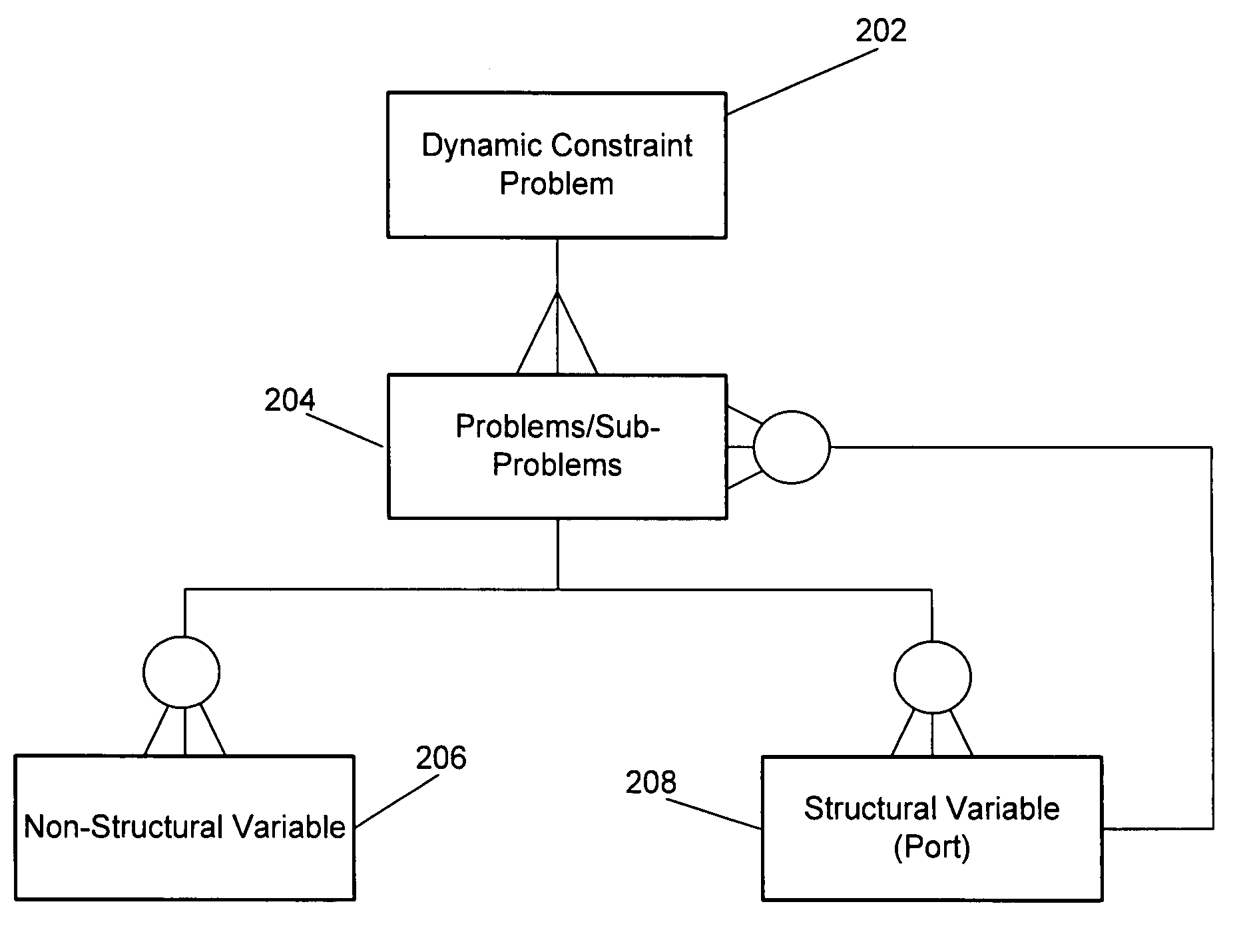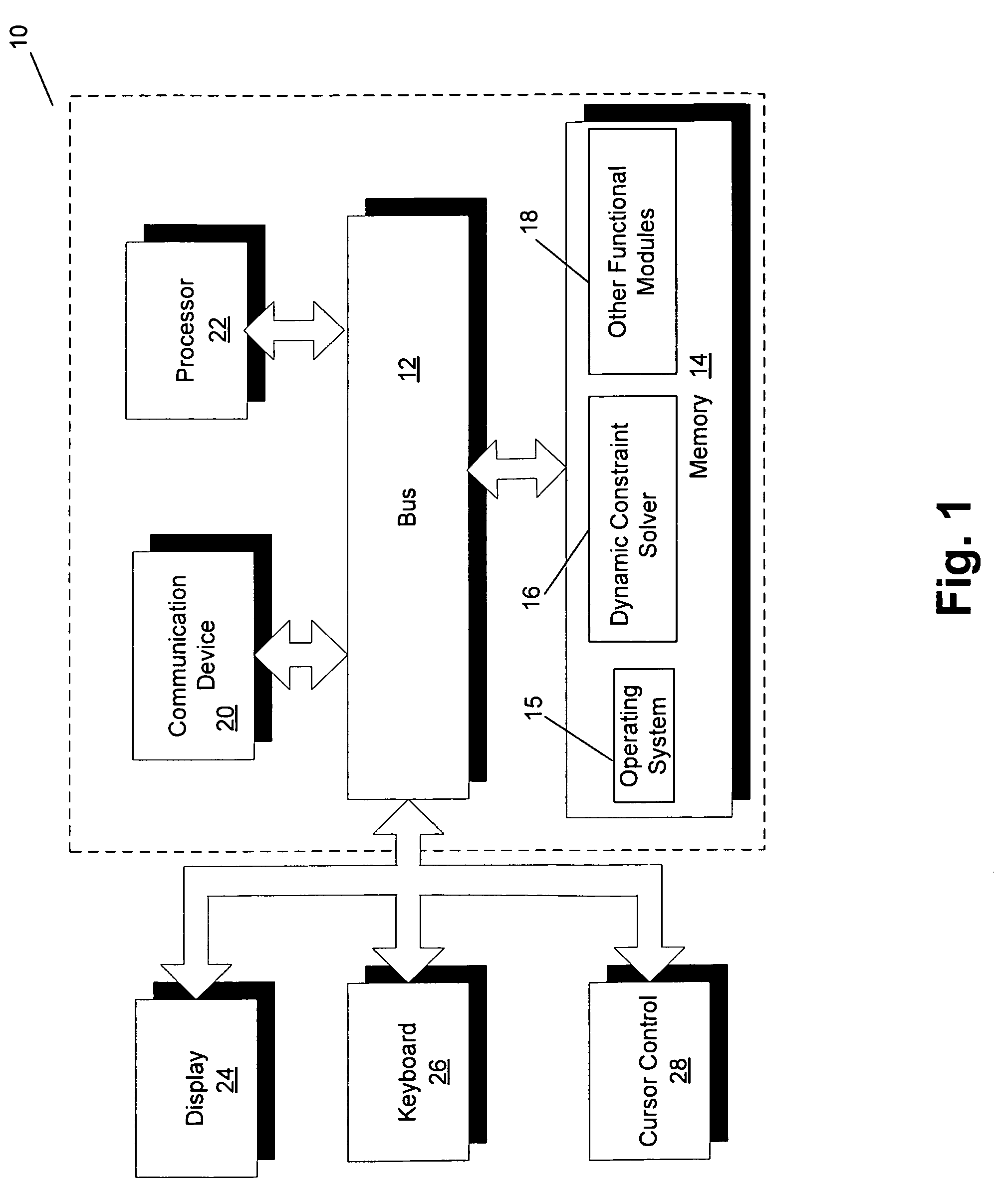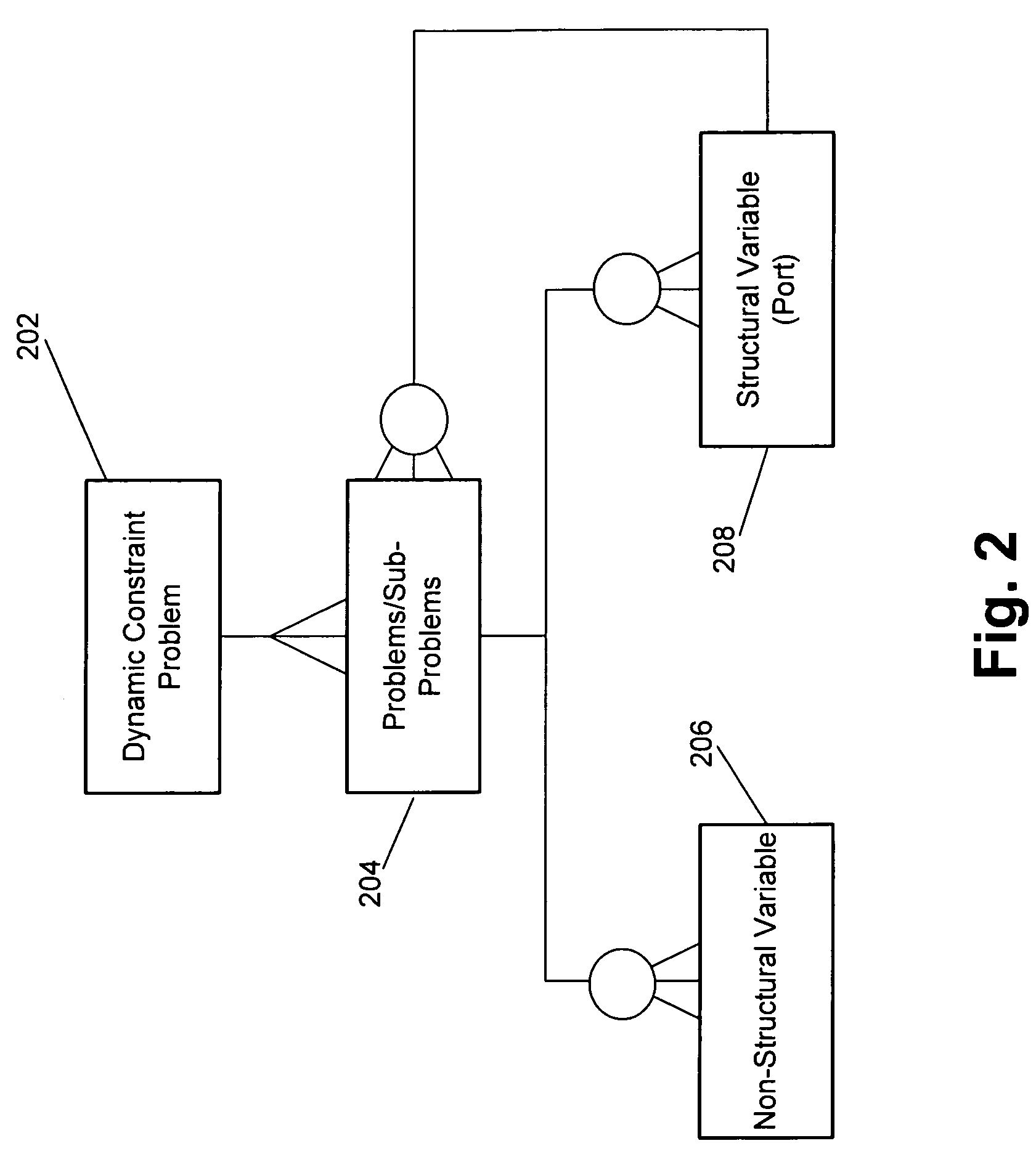Dynamic constraint solver with cross problem constraints
- Summary
- Abstract
- Description
- Claims
- Application Information
AI Technical Summary
Benefits of technology
Problems solved by technology
Method used
Image
Examples
example 1
[0022]A constraint template can be defined between Engine Type and the size of each tire so that if the Engine Type is “Type A”, the size of each tire must be 17″. When a tire is selected or chosen, a cross-problem constraint is generated between the Engine Type and the newly generated tire's size. Therefore, when Tire#1 is created, the cross problem constraint generated is “if Engine Type is Type A, the size of Tire#1 is 17”. Similarly when Tire#2 is created, the cross problem constraint generated is “if Engine Type is Type A, the size of Tire#2 is 17”. As shown in this example, the original definition of the constraint is actually a constraint “template” that is used to create one or more new constraints when new sub-problems are generated and connected to a port. The constraint template functions as a “for all” universal quantifier because it applies to all new sub-problems that are generated.
[0023]As another more complex example (“Example 2”), consider the following dynamic cons...
example 2
[0025]FIG. 3 illustrates Example 2 and the definitions for each problem in accordance with one embodiment. As shown, the definition for problem A includes ports to problems B and C. The definition for problem C (assuming it exists / is connected to a port) includes ports to problems D and E. The definition for problem B includes the variable “X”; the definition for problem D includes the variable “Y”, and the definition for problem E includes the variable “Z”.
[0026]FIG. 4 illustrates an example of a run-time component structure of the problem definition of FIG. 3. In the example, as shown in FIG. 4, problem A includes one instance of sub-problem B (“B1”) and two instances of sub-problem C (“C1” and “C2”). C1 includes sub-problems D and E (“D1” and “E1”) and C2 also includes sub-problems D and E (“D2” and “E2”). In the model of FIG. 4, a cross problem constraint template exists that Y=Z but only if Y and Z are under the same sub-problem C. Therefore, when D1 and E1 are instantiated, ac...
PUM
 Login to View More
Login to View More Abstract
Description
Claims
Application Information
 Login to View More
Login to View More - R&D
- Intellectual Property
- Life Sciences
- Materials
- Tech Scout
- Unparalleled Data Quality
- Higher Quality Content
- 60% Fewer Hallucinations
Browse by: Latest US Patents, China's latest patents, Technical Efficacy Thesaurus, Application Domain, Technology Topic, Popular Technical Reports.
© 2025 PatSnap. All rights reserved.Legal|Privacy policy|Modern Slavery Act Transparency Statement|Sitemap|About US| Contact US: help@patsnap.com



